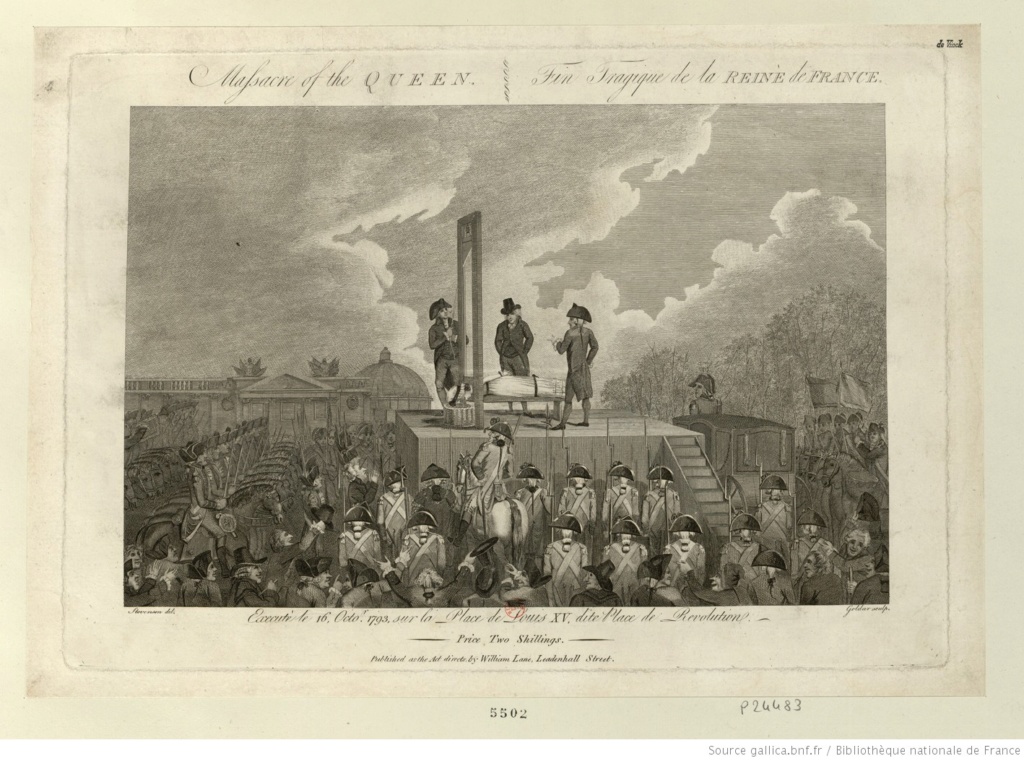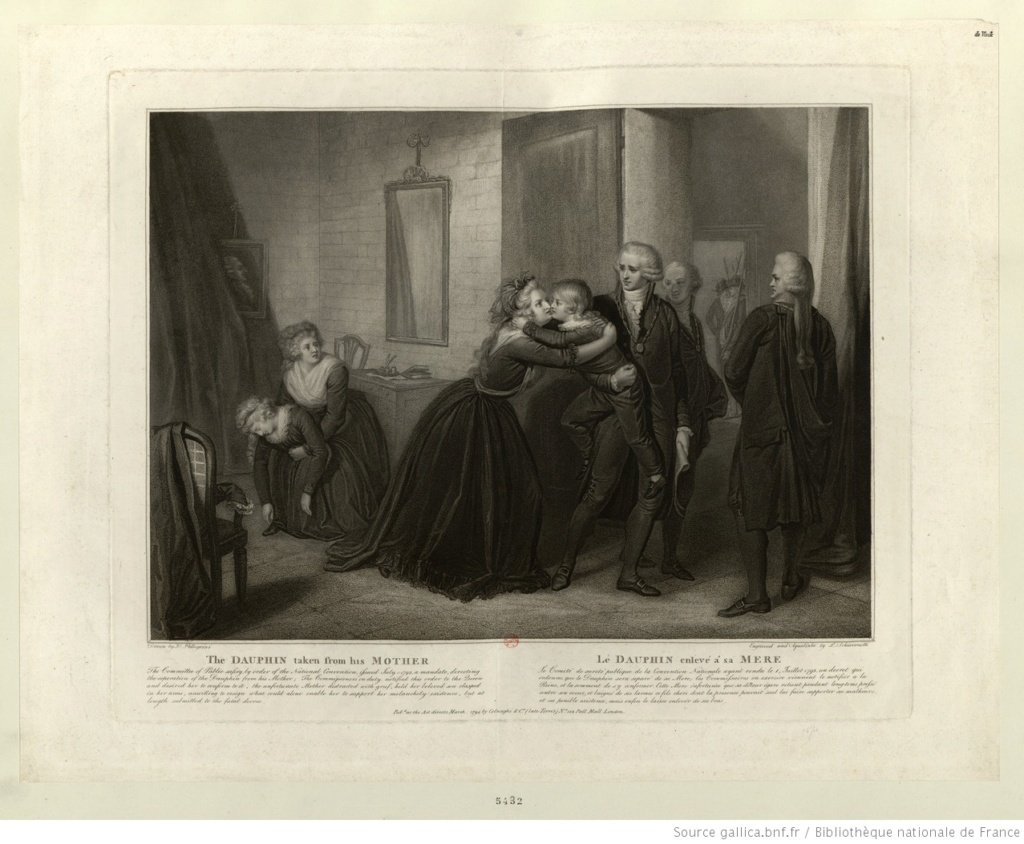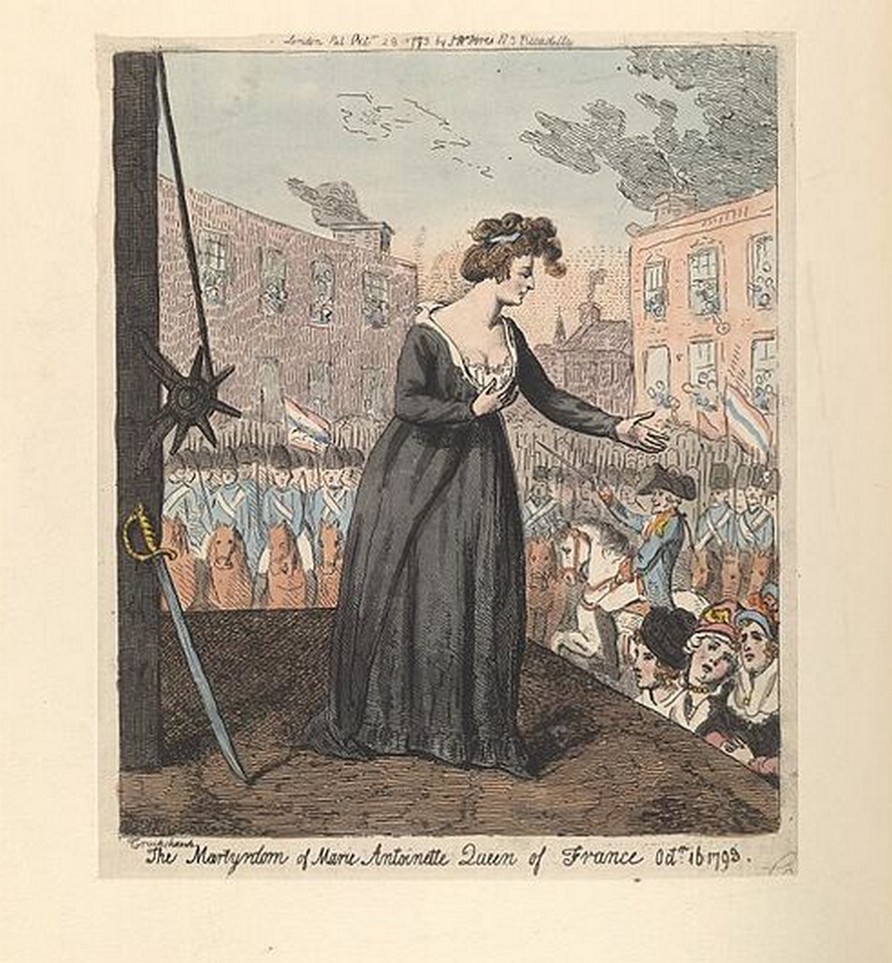 |
| Execution of Marie-Antoinette (click to enlarge) |
 |
| Louis XVII is taken away (click to enlarge) |
A new study of the spontaneous works of art and literature that arose throughout Europe hailing Marie-Antoinette as a martyr. Via
Le Boudoir de Marie-Antoinette. From
Open Edition (translated with help from Google):
The production of literary works is generally carried out by emigrants. The printer Fauche-Borel, then installed in Neuchâtel, would thus have printed almost immediately after the death of Marie-Antoinette a summary of the horrible assassination of Marie-Antoinette of Lorraine of Austria from...Fenouillot. The Martyrdom of Marie-Antoinette of Austria, Queen of France, Etienne Aignan's tragedy, was published in 1793 in Amsterdam then republished in 1794 in Liège and Brussels 5. Iconographic production, on the other hand, is mainly the work of foreign artists. Thus, the London editor William Lane published, probably in 1793 or 1794, a Massacre of the Queen painted by JH Stevenson and engraved by a certain Goldar 6. Painters, engravers and publishers often specialize in this type of production. Stevenson also painted a death and a portrait of Louis XVI. 7 The London editors Paulo Colnaghi, Carlo Lasinio and Mariano Bovi as well as the Augsburg editor Martin Engelbrecht develop complete cycles of prints on the misfortunes of the royal family at the Temple in which we find representations of the farewells of Louis XVI at his family, the kidnapping of Louis XVII from his family or the trial of the queen. Marie-Antoinette appears in most of the scenes shown in image.
The dissemination of this production in France is difficult to define and has probably been only confidential. It was not until periods of political appeasement that a national production emerged: 1794-1797, essentially 1800-1802. The case of the engraver Vérité, well-studied by Claude Langlois, is very characteristic of this phenomenon 9. After two unsuccessful attempts in 1794 and 1799, he managed to publish his series of six prints on the misfortunes of the royal family in 1801 10. The Queen's biographers encountered the same difficulties: if Montjoie managed to publish his Vie de Marie-Antoinette in 1797 without difficulty, La Vie de Marie-Antoinette de Babié de Barcenay, published in 1802, was seized by the police despite the care of the author to insert praise of the First Consul at the beginning of his work 11. It is of course the Restoration that will allow the massive dissemination of works concerning the queen, a large number being reissued at that time and new works opportunely flooding the market: this is how Lepître, one of the municipal officials who betrayed the Commune for the benefit of the royal family, published its Souvenirs in 1814.
In all, from 1793 to 1816, around thirty works on the single queen were published: funeral orations, biographies, poems, notices. To this must be added the numerous texts concerning the entire royal family, including The diary of what happened at the tower of the Temple of Cléry, a true cornerstone of royalist memory, very widely distributed: 7 editions in French in London, one in Italian and one in English for 1798 alone, two French editions in 1814 and one in 1816 12. There are more prints. The collections of the National Library of France keep, for example, thirty counter-revolutionary prints on the execution of the queen alone.
All of this production takes place without order, without coordination, without consultation. Even under the Restoration, the royal power eventually encouraged authors and artists, but was not directive 13 . This does not however prevent phenomena of echoes and repeats, certain works serving as a matrix for others. The tragedy of Aignan, well disseminated, thus directly inspires several prints including Marie-Antoinette leaving the Conciergerie engraved in the United Provinces in 1794 by Pieter Hendrik Jonxis after a drawing by Cornelis van Cuijlenburg (Figure 1) 14. (Read more.)

Share





















No comments:
Post a Comment